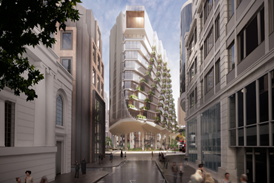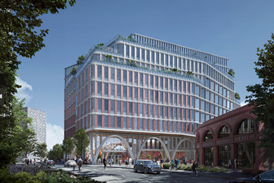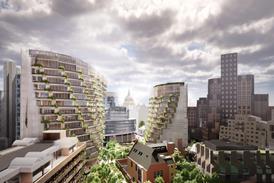As the Hackitt review publication date approaches Thomas Lane assesses the calls for building regulation changes

With the post-Grenfell Hackitt review expected out in early May, the voices of the multiple groups lobbying for change to building regulations are getting louder by the day.
Last week the RIBA wrote to the communities secretary Sajid Javid expressing concern its recommendations for changes to building regulations were in danger of being overlooked. These include mandating a second means of escape on residential buildings over 11m tall and the banning of combustible cladding materials on buildings over 18m.
Earlier this week the Association of British Insurers published a report calling for the full-scale testing regime used to determine the performance of cladding systems to be revised. Full-scale testing of cladding system mock-ups can permit the use of combustible materials that wouldn’t otherwise be allowed. The ABI contends that the tests don’t replicate the conditions found on real buildings and cladding systems are compromised by the inclusion of vents, gaps in the external cladding and issues with cavity barriers. It also argues that real fires contain plastic which burns more fiercely than wood – the material used for the full-scale tests.
It is worth stepping back and looking at these issues in the light of information about the Grenfell Tower fire that has emerged during this period. A leaked BRE Global report into the disaster revealed multiple failings at Grenfell. These included the fact that almost half the fire door closers were either missing or not working, allowing the lobbies and stairwell to fill with smoke. If Grenfell had featured a second stairwell, as called for by the RIBA, this would have been similarly compromised.
The report also revealed that gaps around windows were filled with combustible materials, and that cavity barriers were too small for the gaps they were meant to seal, or were incorrectly installed. It confirmed the external aluminum composite material panels featured a highly combustible plastic core. Separately, it has emerged that the rating of these panels for reaction to fire was downgraded in France from a ‘B’ to an ‘E’ in 2014. If our certification bodies had followed suit, there is no way these panels could have been allowed to be used on a building like Grenfell.
So what does this tell us?
The ABI makes valid points about the integrity of cladding systems being compromised in real-world situations and is right to call for the full-scale testing regime to be revisited. But it’s worth remembering that the ABI tests didn’t replicate the full-scale tests it was criticising. And it comes at this topic from the perspective of limiting damage to buildings in addition to life safety issues, which are the sole focus of building regulations. There may be a case to further limit or even ban the use of combustible materials on tall buildings but this will come at the cost of either reducing the thermal performance of external walls or having to fit much thicker insulation to tall buildings.
Like many disasters of such a scale, the Grenfell Tower tragedy was down to a combination of things all going wrong at the same time. Questions include the certification regime, cavity barrier specification and workmanship issues. Some of the proposed changes will help to mitigate the risk of future disasters on their own, but unless the industry tackles all the issues holistically the risk of another major disaster, which may look very different from Grenfell, remains.















2 Readers' comments